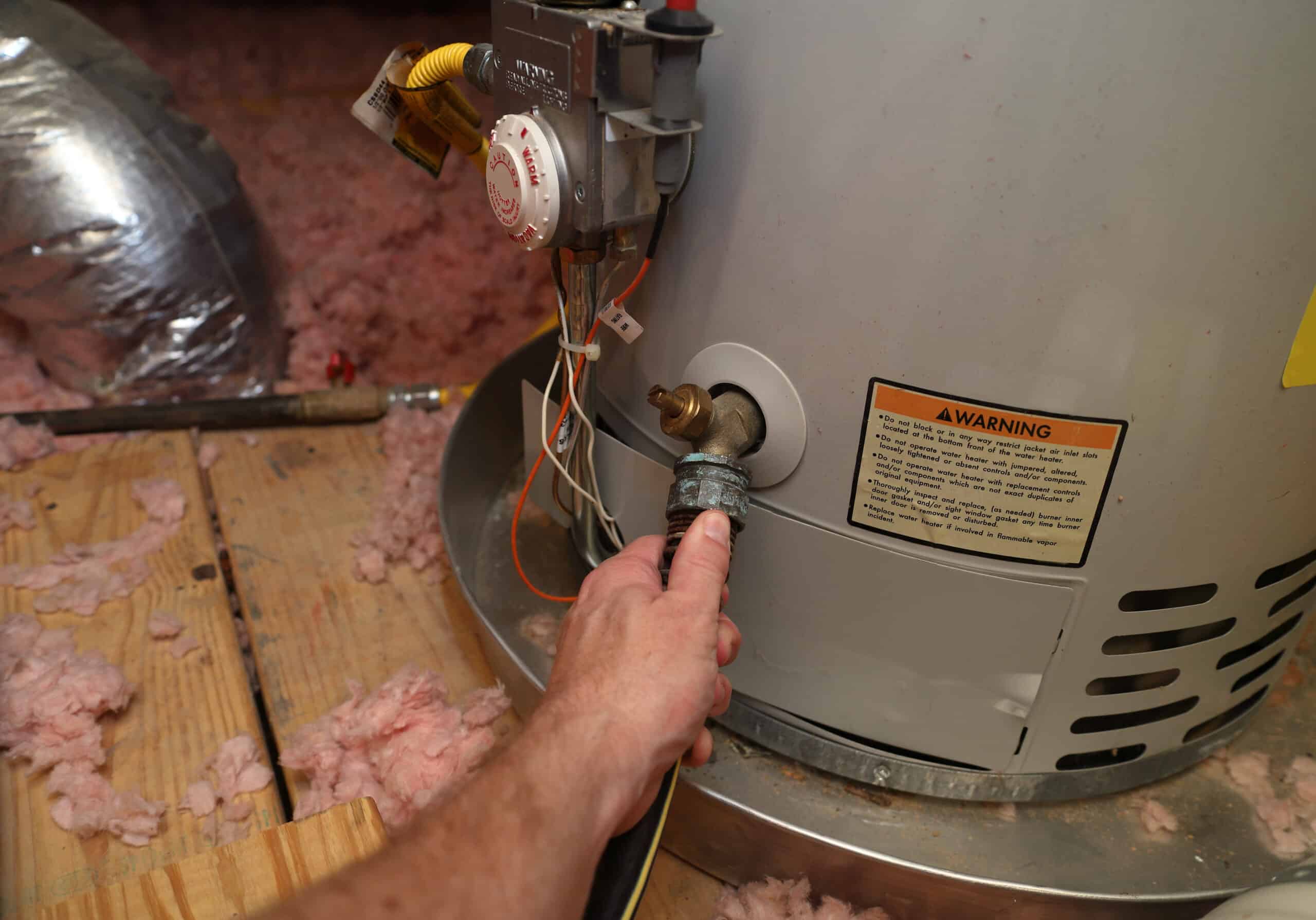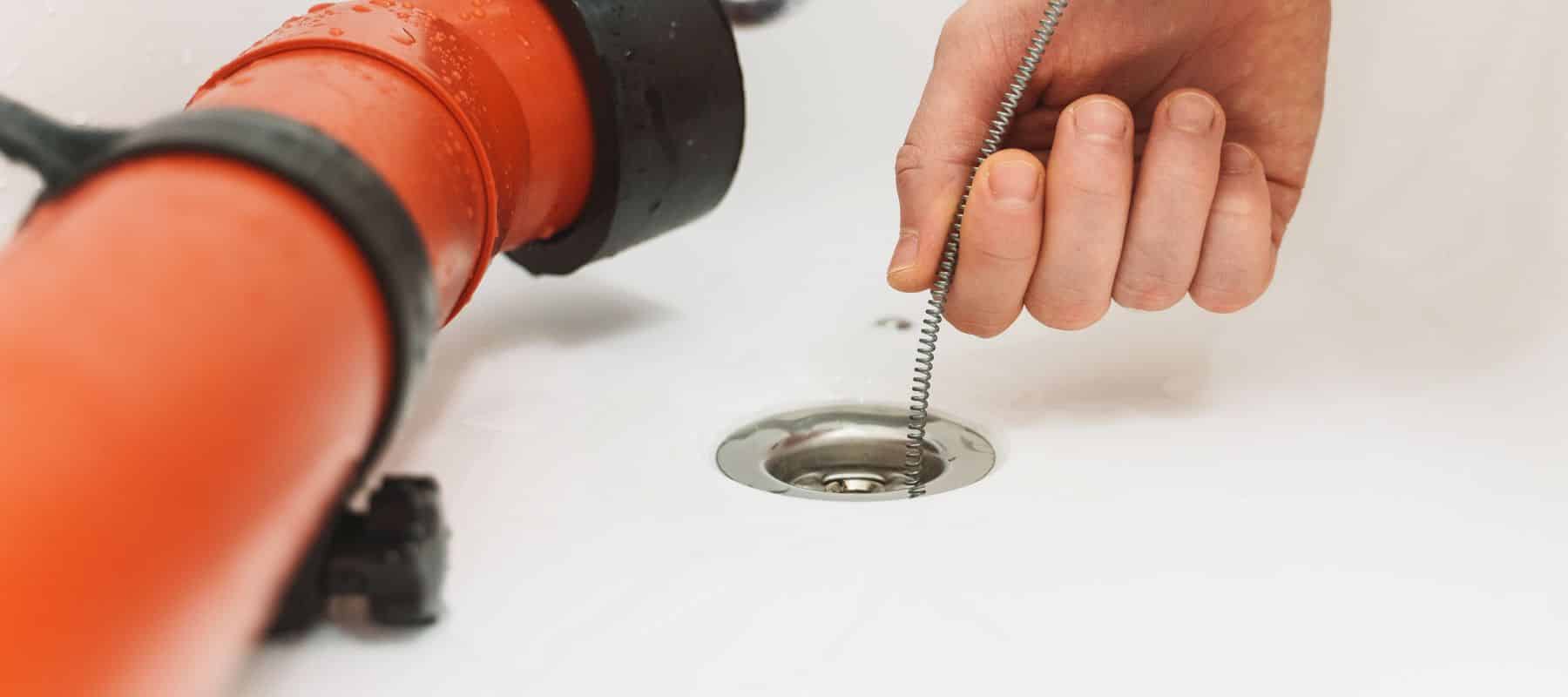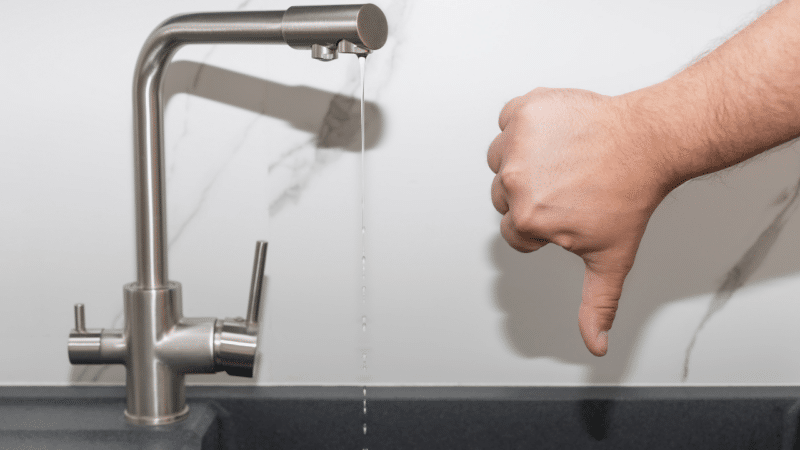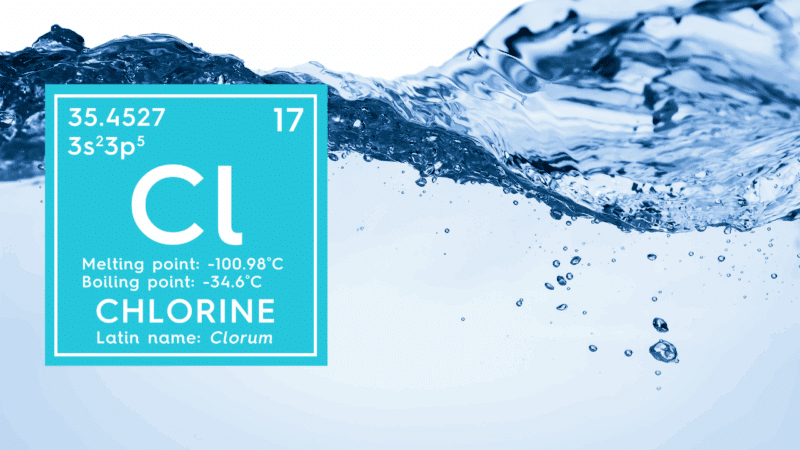In this article…
- What Are Microplastics?
- How Microplastics Enter Your Body
- What Health Concerns Are Linked to Microplastics?
- How to Reduce the Microplastics You Consume
- Reducing Microplastic Intake With A Water Filtration System
We’ve all seen plastic waste in oceans, on roadsides, and in landfills. Unfortunately, plastic can be seen nearly everywhere we go.
But what if we told you it’s not just out there, but that it’s in you?
A study conducted in 2019 by the World Wildlife Fund, completed by the University of Newcastle, found that the average person consumed up to 5 grams of microplastics each week, which equates to the size and weight of a credit card.
That adds up to over 250 grams of microplastics consumed in one year.
The biggest source of microplastics? The water we drink.
At Jim’s Plumbing Now, our team of water quality experts is here to educate you on all you need to know when it comes to what’s in your water.
Because we ingest microplastics every day, you want to understand how they can affect your long-term health and what you can do to minimize microplastic consumption.
This article will break down what microplastics are, where they come from, how they end up in your body, and more.
Then, you’ll have a better understanding of what microplastic consumption really does to your body and how you can improve your health.
What Are Microplastics?
Microplastics are categorized as tiny pieces of plastic less than about 5 millimeters long. That’s about the size of a sesame seed, and often much smaller.
There are two main types of microplastics.
Primary microplastics are intentionally manufactured to be small, like microbeads in face scrubs or glitter.
Secondary microplastics are created when larger plastic items, like bags, bottles, and containers, degrade due to sunlight, friction, or chemical exposure.
These particles don’t biodegrade. They simply break into smaller and smaller fragments. Because of their size, they’re not filtered out by most municipal water treatment plants, which is one way they end up in your body.
Where Do Microplastics Come From?
Plastic is so deeply embedded in daily life that it’s constantly breaking down and entering our environment. We use plastic so much that sometimes it’s easy to forget just how much is wasted every day.
Here are some of the most common sources of microplastics.
- Plastic water bottles: Microplastics come out especially when stored in hot cars or exposed to sunlight.
- Synthetic clothing: Polyester and nylon fabrics shed microfibers in the wash, up to 700,000 fibers per load.
- Food packaging: Single-use plastics leach particles, especially when heated in microwaves.
- Industrial runoff and stormwater: Waste from urban areas, agriculture, and plastic manufacturing ends up in lakes and rivers.
- Plastic pipes and aging infrastructure: Older plumbing systems may degrade over time, releasing particles into water supplies.
Microplastics come from many different places, from plastic water and soda bottles to clothing and food packaging. From there, the microplastics then have an entryway into our bodies.
How Microplastics Enter Your Body
You can’t see them, smell them, or taste them, but microplastics enter the human body through several sneaky ways.
Here are three of the most common ways we ingest microplastics.
1. Drinking Water (Tap + Bottled)
The number one source of microplastics ingested worldwide is through our drinking water, both from the tap and through a bottle.
An investigation by Orb Media found 93% of bottled water samples from 11 major brands contained microplastic contamination, including particles of polypropylene, nylon, and polyethylene terephthalate (PET).
On average, bottled water had 325 particles per liter, while tap water had about 5.5 particles per liter.
Studies like this one sparked the worldwide concern for microplastics, not only their environmental impact, but also their impact on the human body.
2. Food Consumption
Plastics have been found in shellfish, salt, beer, produce, and even milk.
Plastic particles often cling to packaging or accumulate in marine animals that we eat whole, like shrimp and mussels. They can also come from plastic packaging.
A study published in Environmental Science & Technology estimated that humans consume 39,000 to 52,000 particles of plastic annually through food.
3. Inhalation
Did you know you can actually inhale microplastics?
Indoor air contains airborne microplastics from synthetic fibers, carpets, clothing, and household dust that can make their way into your body.
These particles are small enough to lodge in lung tissue, which has raised concerns about long-term inflammation.
What Health Concerns Are Linked to Microplastics?
The concern and study of microplastics and how they affect our health is relatively new in the scientific world.
With plastic consumption and waste at an all-time high, scientists have devoted more time and effort to studying the long-term health impact of microplastic exposure.
Some of the most noted concerns found thus far included chemical contamination, microplastics in the bloodstream, and inflammation.
1. Chemical Contamination
Microplastics often carry toxic chemicals like BPA, phthalates, and PFAS (also known as forever chemicals). These substances have been linked to hormone imbalances, thyroid issues, reproductive problems, and even certain cancers.
Once microplastics enter the body, they can leach these chemicals into organs and tissues, posing long-term health risks.
2. Inflammation and Tissue Damage
Studies in lab animals show that microplastics can cause inflammation in the gut and other organs. They may damage the intestinal lining, disrupt healthy gut bacteria, and trigger immune responses.
This raises concerns about potential links to chronic inflammation, digestive issues, and weakened immunity in humans.
3. Microplastics in the Bloodstream
A 2022 study in Environment International found plastic particles in the blood of 77% of human test subjects, or 17 out of 22.
Common plastics like PET, which come from water bottles, were detected, suggesting that microplastics can move beyond the digestive system and circulate to organs, raising red flags about long-term exposure.
4. Microplastics in the Placenta
Microplastics have also been found in human placentas, meaning these particles may reach unborn babies during pregnancy.
While the full effects are still unknown, this discovery raises serious concerns about developmental risks and the need to minimize exposure during pregnancy.
All in all, there’s no official “safe level” of microplastic exposure yet, but the science is clear enough. The less you ingest, the better.
Filtering your drinking water with a reverse osmosis or whole-home filtration system is one of the most effective ways to reduce your daily plastic intake and protect your health.
How to Reduce the Microplastics You Consume
Although microplastics can be difficult to detect and filter, there are several simple and effective ways you can reduce your microplastic consumption, which we’ll explore here.
1. Stop Buying Bottled Water
Bottled water is not only expensive…it’s often more contaminated than tap water.
Buying a reusable stainless steel or glass water bottle can eliminate hundreds of plastic bottles per year from your routine, minimizing your microplastic intake.
2. Install a Water Filtration System
Whole-home filtration systems protect every faucet, showerhead, and appliance in your home. These are ideal for families wanting to filter not just drinking water, but water for bathing, cooking, and laundry.
Reverse Osmosis (RO) systems provide the most precise filtration at the kitchen sink and are an affordable option to filter your drinking water.
These filters can remove particles as small as 0.0001 microns, including microplastics, lead, arsenic, fluoride, and chlorine
According to the Environmental Working Group (EWG), RO is one of the few technologies proven to remove both microplastics and PFAS chemicals
3. Use Plastic-Free Storage
Switch to glass or stainless steel for food storage, especially when microwaving or freezing. Consistent use of plastic food storage containers can release microplastics into your food, especially when microwaved.
4. Filter Laundry Microfibers
Use laundry bags or install filters to catch synthetic fibers before they enter wastewater systems.
Microplastics from synthetic materials can make their way into your water supply through the washing machine, so installing a filter barrier will help minimize this waste.
5. Improve Indoor Air Quality
Because microplastics can be airborne, try using HEPA filter vacuums and air purifiers to reduce airborne microplastic particles.
When dusting, clean with microfiber cloths instead of dry dusting to completely remove microplastics as best as possible.
Reducing Microplastic Intake With A Water Filtration System
Now that you have a better understanding of what microplastics are, where they come from, and how they can affect your health, you can take action to reduce your microplastic intake and protect yourself and your family from further contamination.
Even if you eat clean and avoid plastics, water remains your most frequent and unfiltered exposure point. You drink it, cook with it, bathe in it, and if it’s carrying plastic, it’s in your body daily.
The good news is that you can take control of your microplastic consumption and install a water filtration system.
By installing a home filtration or reverse osmosis system, you’re adding a powerful line of defense between you and an invisible problem. It’s one of the most affordable and effective ways to improve your family’s health and reduce your long-term exposure to harmful pollutants.
Whole-home filtration systems don’t just filter out microplastics. They also filter
- Chlorine
- PFAS chemicals
- Heavy metals, like lead
- Sediments
- And more
At Jim’s Plumbing Now, we’re here to educate you on everything you need to know when it comes to what’s in your water.
We believe that education and information are the most vital things homeowners can have, especially when it comes to your health.
Whether you’re interested in a whole-home system or a simple under-sink RO unit, we’ll walk you through the best solution for your household and your budget.
But, before scheduling your consultation with one of our water quality experts, you want to learn more about how water quality is tested and what’s in your water.
Check out this article that details how home water quality is tested, what it tests for, what safe (and unsafe) contaminant levels are, and more.










